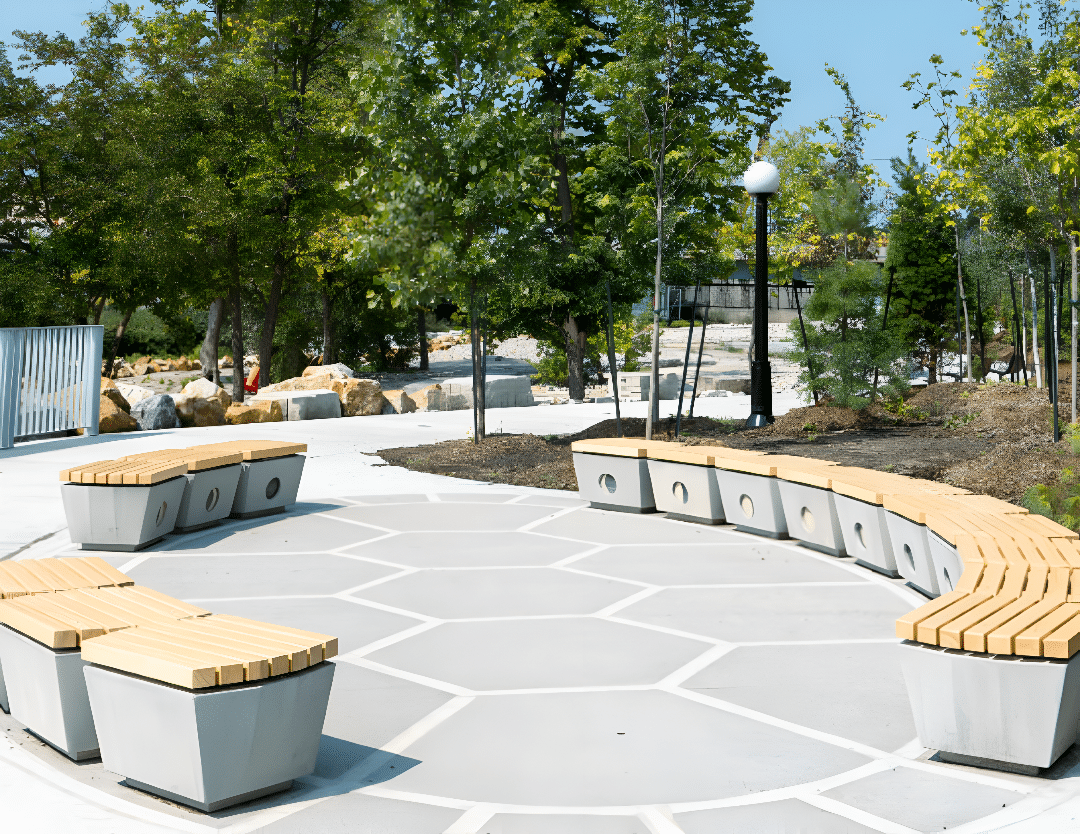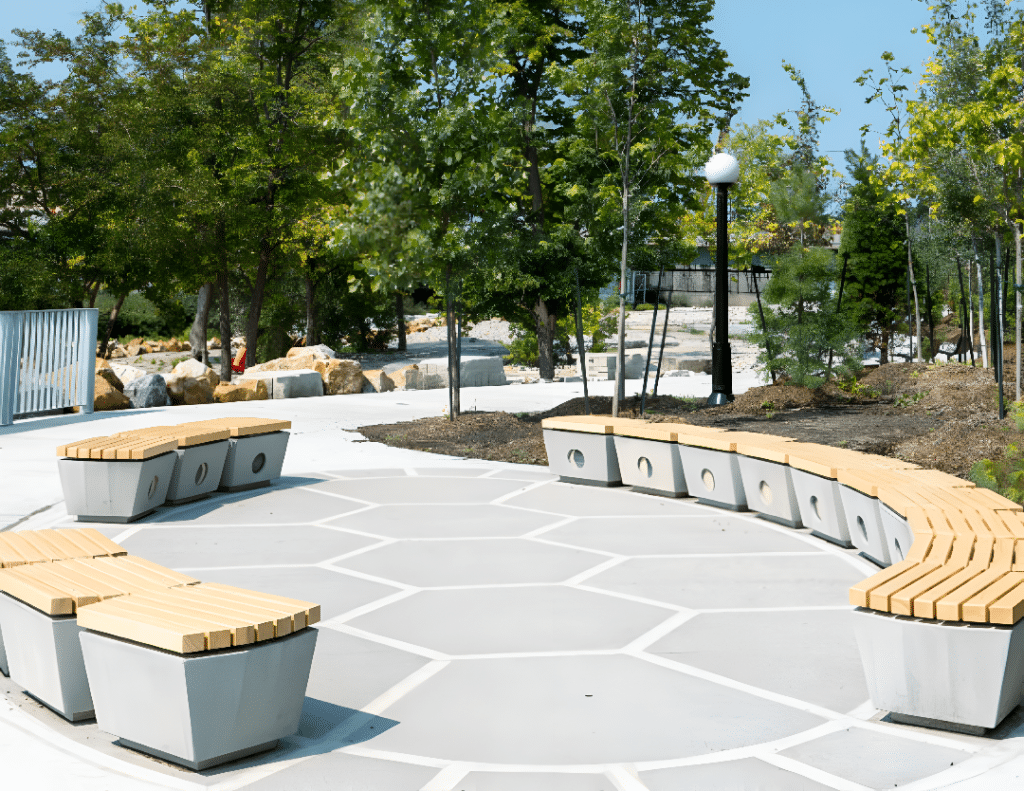Tesasini Park: Walking Through Algonquin Time
Most urban parks give you benches, trees, and maybe a playground. Tesasini Park gives you something rarer, time. Built along the Ottawa River within Zibi, Tesasini (Algonquin for “flat rock”) is more than a green space. It’s a living calendar that embodies Algonquin teachings, resilience, and relationship to land and water.
For Indigenous people, time is measured in cycles of the natural world. The 13-moon calendar guides the year, each moon tied to events in the land: the Goose Moon signals migration, Strawberry Moon celebrates renewal, Falling Leaves Moon marks the forest’s rest. These moons aren’t abstract, they direct when to hunt, gather, plant, and hold ceremony. It is practical, but also deeply spiritual, embedding values of patience, reciprocity, and responsibility into the flow of life.
The Algonquin lunar calendar is often explained through the turtle’s back. On a turtle shell, there are 13 large plates that mirror the 13 moons in a year. Around those are 28 smaller plates, reflecting the days within each moon’s cycle. This natural pattern is more than coincidence, it’s a reminder that timekeeping is written into creation itself. The turtle’s back is a living calendar, showing that human life, the moon’s movement, and the natural world are all connected through the same rhythms.
Tesasini Park brings that worldview into an urban setting. Its design includes a lunar bench arrangement shaped after a turtle shell, a symbol of creation and time. Thirteen large sections represent the moons of the year, and 28 smaller outer ones mark the days within each moon. Stone carvings by artist Solomon King, a member of the Chippewas of Nawash First Nation, bring each moon to life, grounding teachings in the landscape itself.
But Tesasini Park isn’t only a cultural expression, its simple design is also a response to the climate challenges facing the Ottawa River. After major floods in 2017 and 2019, the park was designed to work with the land rather than against it. Exposed bedrock, riprap barriers, and layered stone pathways create a shoreline that can withstand rising waters. Plantings stabilize soil, and the park doubles as a buffer during flood seasons.
In this way, Tesasini combines Indigenous knowledge with contemporary resilience planning. The rock formations, lunar seating, and shoreline restoration all serve two purposes at once: honouring culture and protecting the community.
Urban parks are often planned for recreation or aesthetics. Tesasini Park does more: it embeds Algonquin knowledge directly into the city’s landscape. It reminds residents that time belongs to more than deadlines and commutes. It belongs to the cycles of geese, berries, leaves, and water, the same cycles that shaped this land long before city grids arrived.
Tesasini Park is more than a park. It’s a cultural statement, a flood defense, and a living calendar all at once. It shows how Indigenous knowledge can guide not only how we understand history, but how we shape the future of our cities.
Zibi continues to be grateful for our continued relationship with the Algonquin Nation as we travel the path of Truth and Reconciliation together. We thank the Memengweshii Council for their inspired contributions to this space. Mìgwetch!




